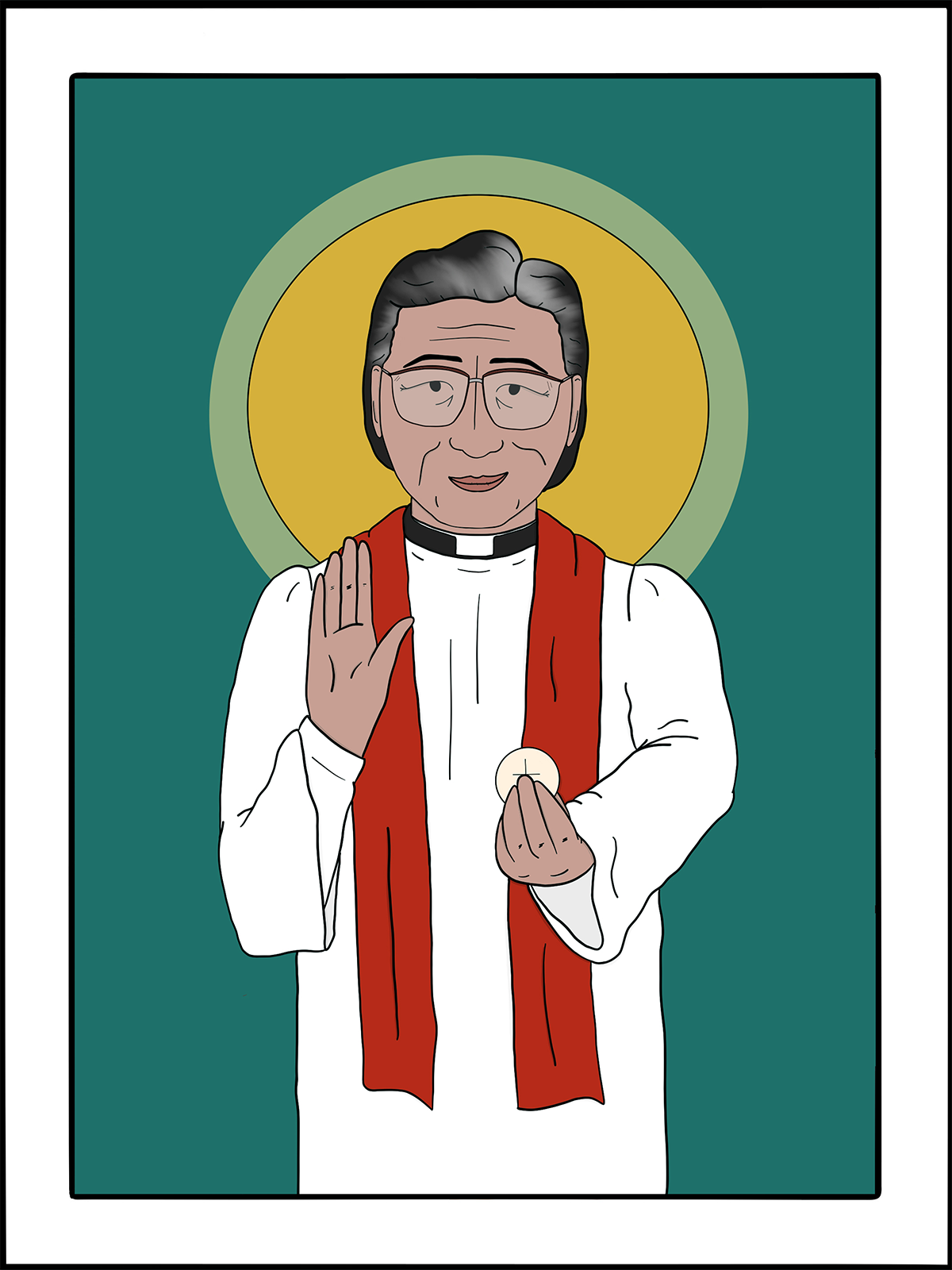
January 24
Florence Li Tim-Oi
Priest, 1992
art by Rev. Kirsten Kohr of Uhrichsville, Ohio Almighty God, who pours out your Spirit upon your sons and daughters: grant that we, following the example of your servant Florence Li Tim-Oi, chosen priest in your church, may with faithfulness, patience, and tenacity proclaim your holy gospel to all the nations, through Jesus Christ our Lord, who lives and reigns with you and the Holy Spirit, one God, in glory everlasting. Amen.
Florence Li Tim-Oi was the first woman ordained as a priest in the Anglican Communion. Named by her father “much beloved daughter,” Li Tim-Oi was born in Hong Kong in 1907. When she was baptized as a student, she chose the name of Florence in honor of Florence Nightingale. Florence studied at Union Theological College in Guangzhou. In 1938, upon graduation, she served as a layworker, first in Kowloon and then in nearby Macao.
In May 1941, Florence was ordained as a deaconess. Some months later, Hong Kong fell to Japanese invaders, and priests could not travel to Macao to celebrate the Eucharist. Despite this setback, Florence continued her ministry. Her work came to the attention of Bishop Ronald Hall of Hong Kong, who decided that “God’s work would reap better results if she had the proper title” of priest. On January 25, 1944, the Feast of the Conversion of St. Paul, Bishop Hall ordained her as a priest.
When World War II came to an end, Florence Li Tim-Oi’s ordination became the subject of much controversy. She made the personal decision not to exercise her priesthood until it was acknowledged by the wider Anglican Communion. Undeterred, she continued to minister with great faithfulness, and in 1947 was appointed rector of St. Barnabas Church in Hepu where, on Bishop Hall’s instructions, she was still to be called priest.
When the Communists came to power in China in 1949, Florence undertook theological studies in Beijing to further understand the implications of the Three-Self Movement (self-rule, self-support, and self-propagation) which now determined the life of the churches. She then moved to Guangzhou to teach and to serve at the Cathedral of Our Savior. However, for sixteen years during the Cultural Revolution, from 1958 onwards, all churches were closed. Florence was forced to work first on a farm and then in a factory. Accused of counter-revolutionary activity, she was required to undergo political re-education. Finally, in 1974, she was allowed to retire from her work in the factory.
In 1979, the churches reopened, and Florence resumed her public ministry. Then, two years later, she was allowed to visit family members living in Canada. While there, to her great joy, she was licensed as a priest in the Diocese of Montreal and later in the Diocese of Toronto, where she finally settled until her death on February 26, 1992.
Excerpted directly from “Lesser Feasts and Fasts 2022,” p. 56-57.
Lessons and PsalmGalatians 3:23-29
Psalm 116:1-12
Luke 5:1-11
Preface of a Saint (2)

